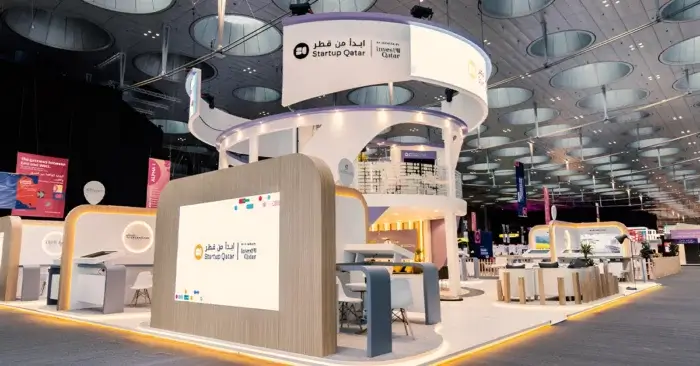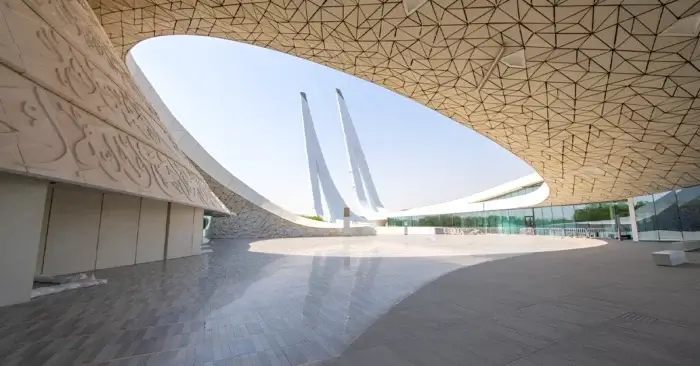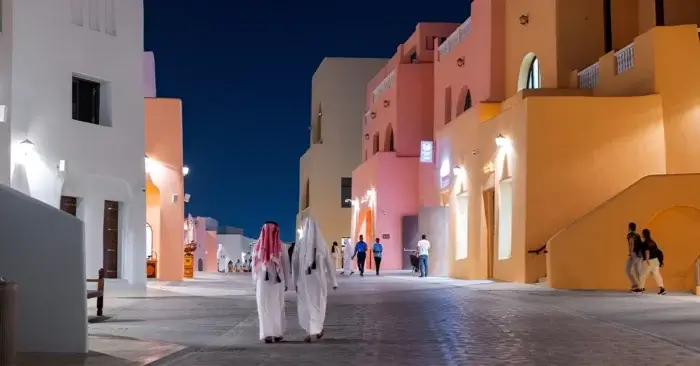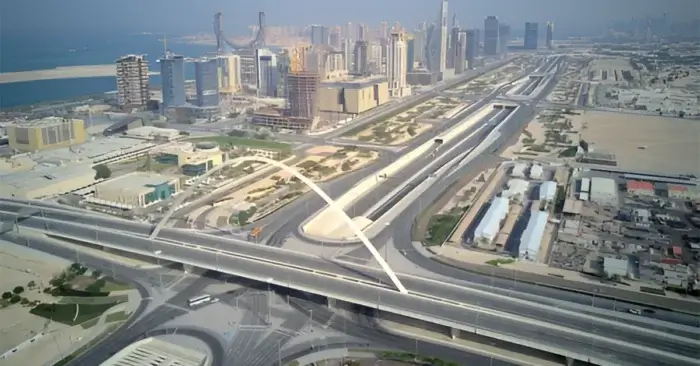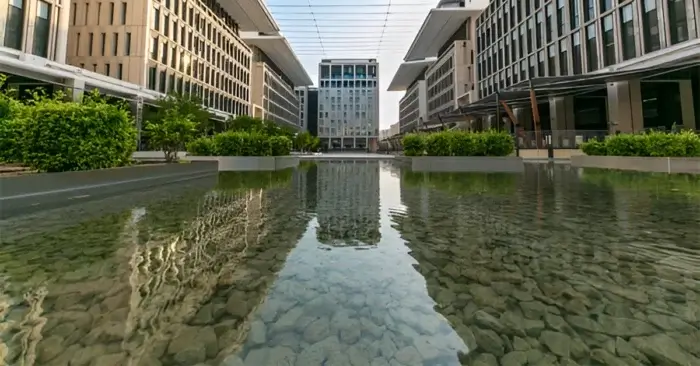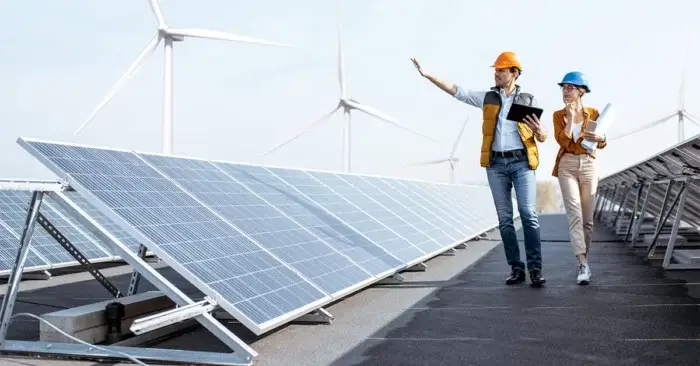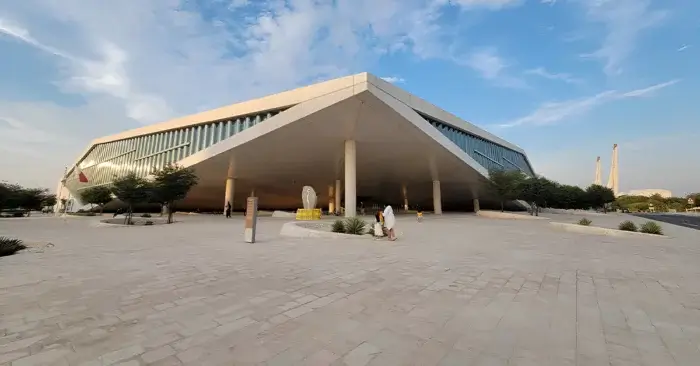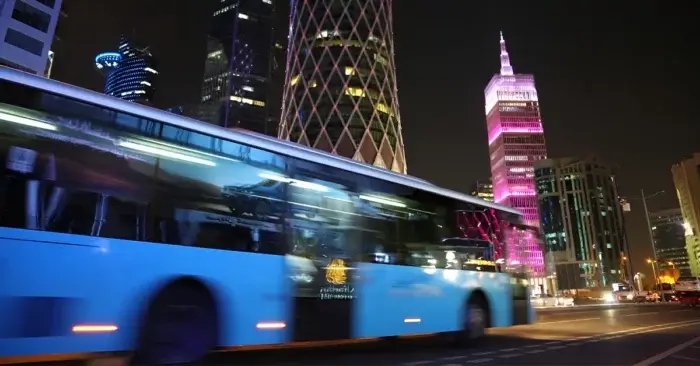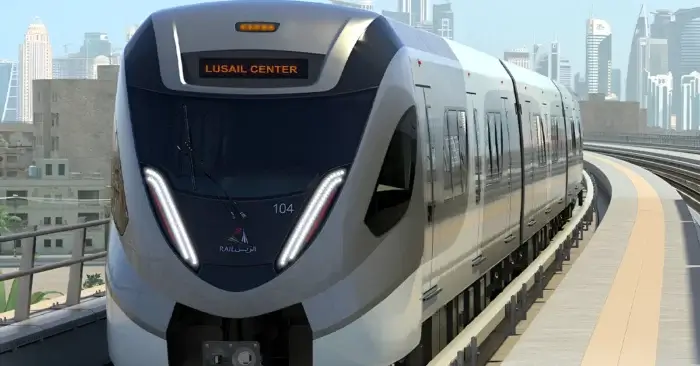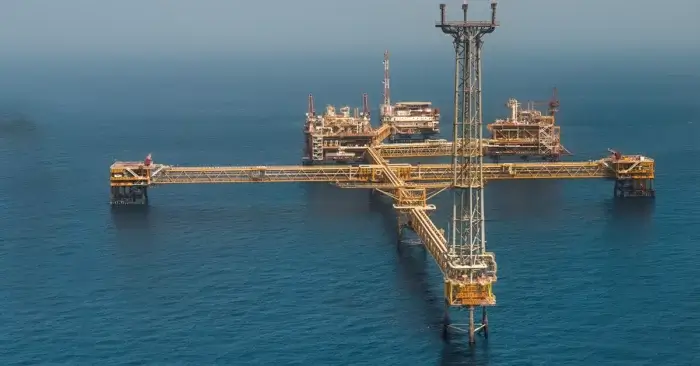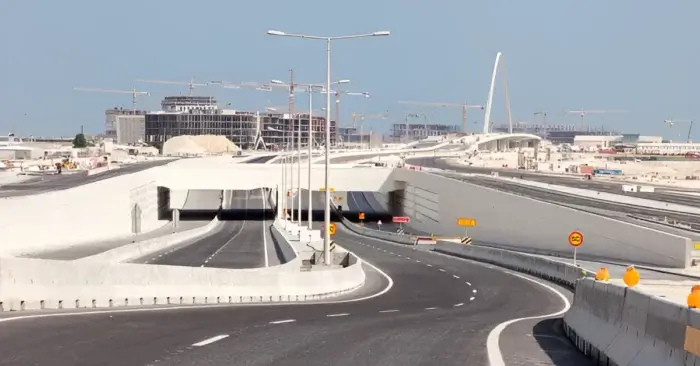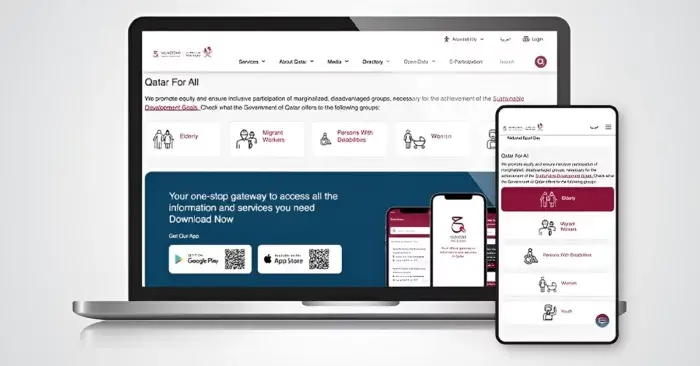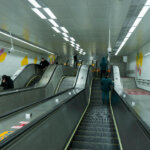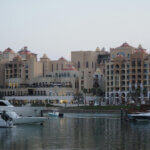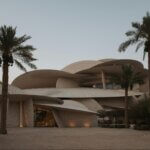Qatar launched the Qatar National Vision (QNV) 2030 in 2008 to sustain long-term socio-economic prosperity. The vision comprises four pillars: Human Development, Social Development, Economic Development, and Environmental Development.
Moreover, the vision has developed three national development strategies with measurable medium-term objectives aligned with the 2030 goals. With only a few years left until 2030, Qatar is entering the final stretch with the Third National Development Strategy 2024 – 2030. So, let’s delve into all its achievements and initiatives!
- Qatar Vision 2030 at a Glance
- 4 Pillars of Qatar Vision 2030
- Achievements
- Programs and Projects
Qatar Vision 2030 at a Glance
Qatar Vision 2030 provides a strategic framework with a comprehensive future roadmap for the country’s economic and sustainable urban development. Qatar’s vision, which will be achieved by the next 5 years, is to enhance its living standard and happiness index.
Primarily, the Qatar Vision 2030 roadmap for transportation includes:
- Sustaining long-term socio-economic prosperity.
- Making a strategic framework by building the vision on four pillars:
- Human Development: Focuses on education and health.
- Social Development: Emphasises cultural preservation and social cohesion.
- Economic Development: Fosters a diverse, competitive economy.
- Environmental Development: Balances growth and environmental conservation.
- Balancing modernisation and tradition by preserving Qatar’s cultural heritage.
- Meeting current and future generations’ needs with sustainable development.
4 Pillars of Qatar Vision 2030
The Qatar Vision 2030 is built on the four pillars, which include:
1. Human Development
The Human Development pillar is a key component of Qatar’s National Vision 2030, emphasising the importance of its people as its most valuable resource.
The vision aims to create a skilled, capable population to drive the country’s ambitious goals. Also, the plan allocates funds towards healthcare, education, workforce development, research and innovation while bringing investments.
Since 2011, the strategic plan has accomplished two significant milestones and is working towards the third and final National Development Strategy. The Qatar Vision’s last strategy has also been effectively taking steps since 2024 and aims to achieve all its goals by 2030.
The vision is to act according to the prescribed timeline on the proposed framework and complete the project on time. As per the Third National Development Strategy (2024-2030), the vision has the following objectives:
- Aims for 18% STEM graduates and 10% advanced ICT skills.
- Strives to reduce non-communicable disease mortality by 36%.
- Focuses on precision medicine and personalised healthcare.
- Seeks an average life expectancy of 82.6 years and a fertility rate of 3.0.
- Aims to increase women’s workforce participation.
- Aspires to position Qatar as a regional hub for research and innovation.
- Focuses on sustainability, AI and biotechnology.
2. Social Development
The second pillar of the Qatar Vision 2030 is Social Development. Its significant goal is to create a harmonious, inclusive society in Qatar. The strategy’s main objective is to centralise the strong moral values, family cohesion, women’s empowerment and cultural preservation as social responsibility.
This pillar is crucial for sustainable progress, recognising that promoting equity, cohesion and collective well-being is vital for long-term growth.
From 2024 to 2030, the Third National Development Strategy for social development aims to achieve:
- Over 20% of the workforce must be in the private and mixed sectors.
- 35% of women are to be in leadership positions.
- Aim for 88% overall satisfaction among visitors and residents.
- Target customer satisfaction with G2C and G2B services.
- Over 46% of the workforce will be in skilled and high-skilled jobs.
- An infrastructure component of the Livability Index of 80 or more.
- Foster social entrepreneurship initiatives.
- Promote innovative solutions to social challenges.
- Preserve and promote Qatar’s cultural heritage.
3. Economic Development
The third pillar of Qatar Vision 2030, Economic Development, aims for a sustainable, innovative, and resilient economy in Qatar. This strategic economic plan promotes entrepreneurship, investment, a skilled workforce and resource utilisation for long-term prosperity.
Moreover, the Economic Development pillar promotes a diversified economy that drives long-term prosperity and global competitiveness.
Qatar’s Economic Goals, stated in its Third National Development Strategy (2024-2030), are:
- Achieve 4% annual non-hydrocarbon GDP growth.
- Maintain a stable sovereign credit rating.
- Achieve 2% yearly labour productivity growth.
- Leverage the private sector for growth.
- Achieve a 5.5% annual fiscal surplus.
- Top 10 in business environment and digital competitiveness.
- Achieve 6% CAGR in SME contribution to non-hydrocarbon GDP.
- Be among the top 30 countries in the Global Innovation Index.
- Attract net FDI of USD 100 billion.
- Establish Qatar as a global tourist destination.
- Become top 10% on the Government Effectiveness Index.
- Increase high-skilled jobs.
- Reduce dependence on the hydrocarbon sector.
- Achieve 85 %+ satisfaction with government services.
- Digitise 90% of government services.
4. Environmental Development
The fourth pillar of the vision, Environmental Development, aims to create a sustainable atmosphere in Qatar. This cornerstone promotes renewable energy, preserving natural resources, advancing eco-friendly practices and safeguarding biodiversity.
Due to this initiative, the country ensures a long-term ecological balance and quality of life.
Qatar’s Environmental Goals, included in its Third National Development Strategy (2024-2030), are as follows:
- Reduce GHG emissions by –25%.
- Reach 4 gigawatts of renewable energy capacity.
- Lower per capita water consumption to less than 310 litres per day.
- Protect 30% of Qatar’s land and marine areas.
- Restore 30% of degraded natural habitats.
- Reduce 33% in per-capita household water consumption.
- Lessen 50% of annual food waste.
Acheivements
So far, this framework has done the following implementations in various sectors and has received tremendous success:
From 2011 to 2016
Each pillar of the vision achieved significant milestones from 2011 to 2016. Some of the key accomplishments are:
Qatar’s Education and Health Reforms
- K-12 curriculum improved, focusing on STEM.
- Over 200 target outcomes achieved.
- The National Health Committee was established in 2016.
- Expanded healthcare infrastructure.
- Implemented e-health initiatives.
- Increased national workforce participation by initiating Qatarisation Programs.
- Established the Qatar Leadership Centre for professional development.
- Established Qatar Science and Technology Park for research and innovation.
Qatar’s Social Achievements
- Ranked 32nd in the 2015-2017 Happiness Index.
- Launched Culture Sector Strategy 2011-2016 for intercultural understanding and cultural heritage preservation.
- Launched Sports Sector Strategy 2011-2016 for community sports participation.
- Expanded social protection system.
- Enhanced emergency response capabilities.
Qatar’s Infrastructure Developments and Economic Progress
- Contributed 67 %+ of the non-oil sector to GDP in 2017.
- Increased trade balance to QAR 137 billion in 2017.
- Developed new industrial areas and special economic zones.
- Finalised draft of the Public-Private Partnership Law.
- Expanded fiscal policy by USD125 billion for construction and energy projects.
- Built 2,200+ km of new roads.
Qatar’s Sustainable Developments
- Opened a Domestic Solid Waste Management Centre in Mesaieed in 2011.
- Launched the Tarsheed national program to reduce energy and water consumption.
- Contained domestic waste generation at 1.3 kg per capita per day.
- Launched a tyre recycling project in 2012 with an over 60% recycling rate.
- Expansion of integrated parks between 2010 and 2016 with a 9% annual growth rate.
- Increased green spaces from 0.5 million square meters in 2011 to 1.3 million in 2015.
From 2018 to 2022
Since the vision is working on a three-milestone strategy, in the second tenure, it has accomplished the following goals:
Qatar’s Education and Health Progress
- Curriculum reforms are aligned with international standards.
- Qatar National Library opened in 2018.
- Achieved a region-leading life expectancy of 80.3 years.
- Launched a national action plan for the COVID-19 response.
- Increased female workforce participation from 37% to 42% by introducing various female jobs in Qatar.
- Enhanced labour market reforms.
- New initiatives for entrepreneurship and SME development.
- Increased R&D spending as a percentage of GDP.
Qatar’s Social Protection Strategy
- Improved accessibility and quality of social services.
- The renovated Qatar National Museum will highlight history and heritage.
- Ranked the world’s safest on the Numbeo Safety Index.
- Reduced road accident mortality rate from 12 in 2008 to 3 by 2023.
- Enhanced programs for disabled integration.
- Expanded volunteering and civic participation.
Qatar’s Global Competitiveness and Economic Growth
- Ranked 14th in the Global Competitiveness Index in 2018.
- Achieved 5% average annual growth.
- Launched National Food Security Strategy 2018-2023.
- Ranked 13th in the Food Security Index in 2019.
- Doubled the e-services number and increased online transactions by 400%.
- Expanded tourism infrastructure, including Qatar Rail’s first phase launch in 2019.
Qatar’s Climate Change Strategy and Environmental Progress
- Implemented national climate change strategy.
- Launched Al Houl and Al Kharsaah Power Plants in 2021 and 2022, respectively.
- Launched the Kahramaa incubator and electric vehicle charging stations in 2016.
- Reduced electricity consumption by 18% from 2012 to 2016.
- Ranked 32nd out of 180 countries on Yale University’s Environment Performance Index in 2018.
- Increased mangrove area to 21.6 km2.
- Successfully recycled 99.7% of wastewater.
- Launched green building projects in Msheireb Downtown Doha and Lusail City.
Programs and Projects
Qatar is enhancing its infrastructure and economic development per its National Vision 2030. Investments in road infrastructure have improved travel efficiency and urban safety. Qatar is also promoting job localisation, expanding LNG production, and creating free zones for foreign investment.
In addition to that, the country is also embracing digital transformation, fostering startups, and positioning itself as a leader in artificial intelligence.
1. Infrastructure Program
Qatar Vision 2030 has introduced an infrastructure program through which they can improve connectivity and transportation. In this program, there are three major ongoing projects, including:
1. Road Networks Project
Qatar has invested heavily in its road infrastructure, with the Public Works Authority (Ashghal) leading the Expressway Programme. In 2022, 935 km of roads were constructed, with plans for an additional 150 km by 2030.
Furthermore, this includes advanced infrastructure like highways, drainage systems, smart transportation technology and pedestrian and cyclist facilities. Local road projects have also improved connectivity, safety and reduced travel times, boosting economic growth and quality of life.
2. Electric Bus Fleet Project
Qatar aims to convert 100% of its bus fleet to electric by 2030, aligning with its national vision. The Ministry of Transport reported a 70% operating rate, indicating the country is on track to achieve this goal.
The Public Bus Infrastructure Program, developed with Ashghal, aims to reduce carbon emissions, fuel consumption and improve air quality for residents and visitors.
3. Metro Doha and Lusail Project
Another significant project, Qatar’s state-of-the-art rail network, managed by Qatar Rail, includes the expansion of Qatar Metro by adding Doha Metro and Lusail Tram. Launched in 2019, the 76-km metro has served over 2 million passengers and 5.5 million riders since 2022.
Moreover, the network supports Qatar’s hosting of major events, driving urban development and sustainability goals. During the FIFA World Cup 2022, the Doha Metro and Lusail Tram served 18.2 million fans.
2. Sustainable Economic Growth
Qatar is moving towards sustainable living by introducing renewable energy through the Sustainable Economic Growth Program. The country also diversifies its economy by stimulating non-hydrocarbon sectors, aligning with the Qatar National Vision 2030.
1. North Field Expansion Project
Qatar is a global leader in LNG production. The project aims to increase its capacity to 142 million tonnes annually and 85% from current levels by 2030. The North Field Expansion Project, named North Field West, will add 16 million tonnes of LNG annually.
2. Free Zones Project
Qatar has established several free zones to attract foreign investment and promote innovation. The upcoming projects in Qatar include the Qatar Free Zone (QFZ), Qatar Financial Centre (QFC), and Qatar Science & Technology Park (QSTP).
These zones provide a favourable business environment with incentives like 100% foreign ownership, tax exemptions and streamlined customs procedures. The project also works with state-of-the-art infrastructure and proximity to key markets.
3. Job Localisation Project
Qatar’s sustainable economic growth strategy prioritises a knowledge-based economy and job localisation. The country has made strides in upskilling and employing Qatari nationals across sectors, reducing reliance on foreign labour and developing a skilled national workforce.
According to Law No. (12) of 2024, this project aims to increase Qatari participation in the workforce. It also empowers citizens to contribute to a diverse, sustainable economy.
3. Investment and Technology
Qatar Vision 2030 has also initiated an Investment and Technology program through which they can digitise government services, promote AI and support start-ups. In this program, there are three major ongoing projects, including:
1. Digital Government Project
The Qatar Digital Government initiative aims to digitise over 90% of government services, aligning with Qatar National Vision 2030. It promotes AI, IoT and blockchain adoption to optimise operations and decision-making.
This initiative supports Qatar’s transition to a knowledge-based, digital-first economy, fostering innovation and modernising public services.
2. Nurturing Start-ups Project
Qatar’s Startup Program promotes innovation and entrepreneurship through mentorship, funding, and networking opportunities. The project includes Web Summit, WSJ Tech Live, Qatar Science & Technology Park, Digital Incubation Centre and Invest Qatar.
The ecosystem is thriving, supported by business-friendly regulations, streamlined processes, and global market access. Qatar’s focus on technology and innovation positions startups as key drivers of sustainable growth and economic transformation.
3. Artificial Intelligence Project
Qatar aims to become the region’s AI hub through strategic initiatives, like the National AI Strategy. The project focuses on creating an efficient producer and consumer of world-class AI applications.
The country launched Fanar, an Arabic-centric large language model, to bridge the global AI gap. In early 2024, Qatar hosted its first Web Summit on AI’s transformative potential and ethical implications.
Since Qatar Vision 2030 has already achieved its two milestones, it is now working through its final stages. With all the renewable energy, improving the health and education sector, giving job opportunities and more, Qatar will transform its nation into a modernised and sustainable one.

